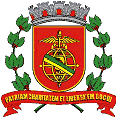GREAT
VINTAGE c1868
SAO PAULO RAILWAY
PHOTOGRAPHS
On 9" x 12" Album Pages
Wonderful Early
Brazilian Railroad History |
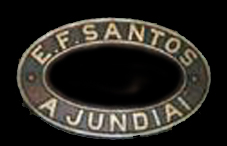
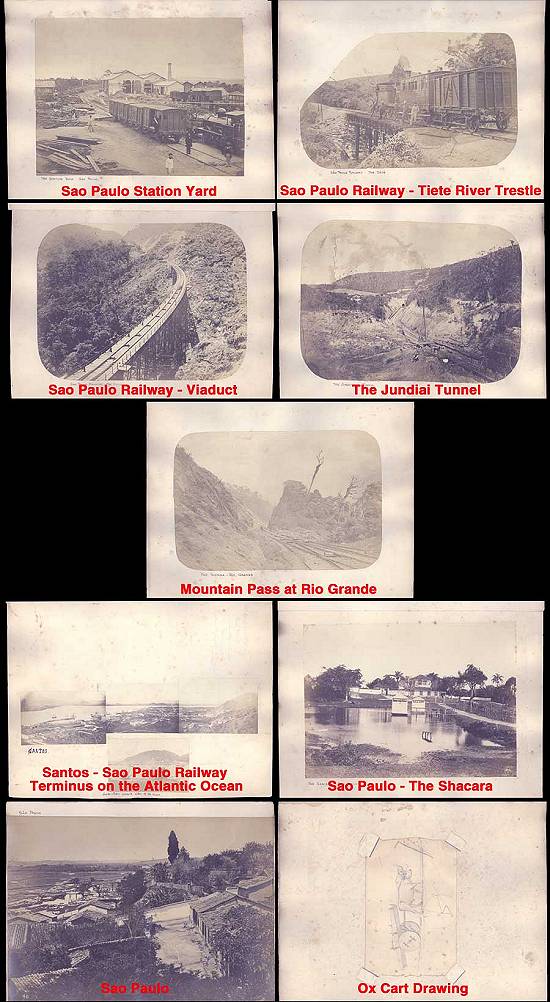
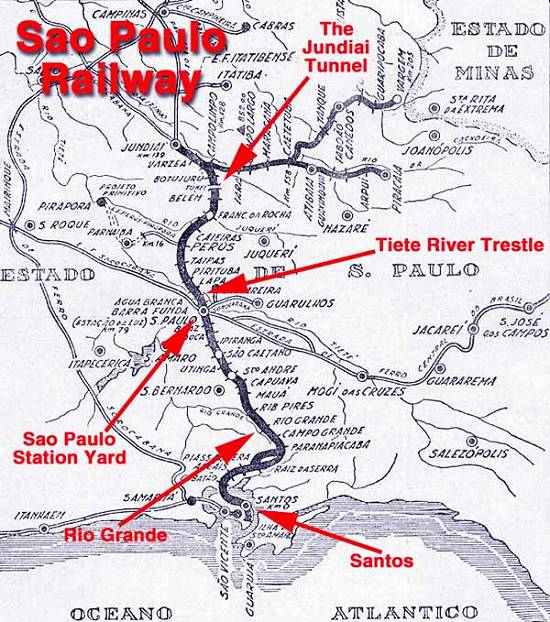
Vintage photographs of early South American and Brazilian railroads are not common, and this is a really
special set, a worthy addition to an advanced or institutional collection of railroad history.
Set of rare large vintage photographs of the British-built and British-owned São Paulo Railway (E.F. Santos a
Jundiai) in Brazil, dating from about the time of its final completion in 1868; there is evidence of construction ongoing in two of the photos and
everything looks brand new.
Much of the system is what is known as a funicular or cable railway, where a stationary engine is used to pull
a train up the steep inclines by means of a roller and cable mechanism. Some of these photographs show this unusual system in detail.
For an interesting history of this fascinating railroad see: http://mikes.railhistory.railfan.net/r059.html
This lot includes 5 photographs depicting scenes along the route of this amazing feat of 19th century
engineering, which linked the port of Santos to Jundiai, in the coffee-producing interior, passing through Sao Paulo and the remarkably steep
terrain of the Serra do Mar, which required it to climb 2,625 feet in only 7 miles. Through jungle.
Without a doubt, it was the most difficult to build rail line of its time.
There are also an additional 3 pages of photographs of outdoor scenes taken in the port city of Santos and in
Sao Paulo which were clearly part of this set, including a fascinating pasted-together panoramic view of Santos, the southern terminus of the Sao
Paulo Railway, where the coffee it hauled was loaded onto ships for export around the world. This railroad was very important to the coffee trade of
Brasil, with nearly all of the world's supply beginning its journey on it.
Handwritten on one of the album pages is the following information, clearly the source of the photographs,
which by the way, DO NOT HAVE ANY COMMERCIAL NAMES, TITLES, COPYRIGHT NOTICES or NEGATIVE NUMBERS ON THEM. Inscription reads:
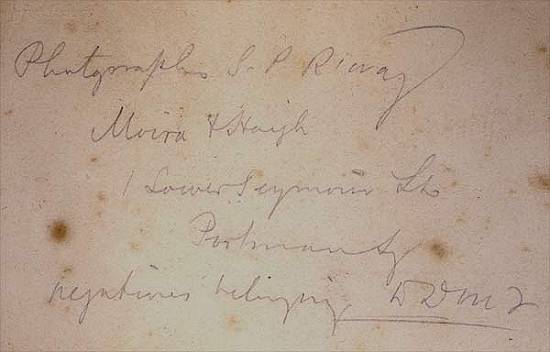
Photographs S.P. R'way
Moira & Haigh
1 Lower Seymour St. Portman Square
negatives belonging to D.M.L. (?)
Hmmm. Why does Victorian era writing always go bad at the worst moment? Those initials are really quite cyptic
(perhaps it's just D.M. with a question mark after it) but they do hold the key to determining who took these photos. We're probably lucky to have
even this, as this might not have been part of a common commercially available series. I can tell you that Edward Haigh is a well-known photographer
from Australia who opened up shop in London and is known for fine landscape and building photography in Australia, including railroads. His
photographs are included in a number of institutional collections and are stylistically similar to these.
All photos are mounted on 9-1/4" x 11-1/2" album pages. Condition is generally good with some damage that for
the most part seems to have been caused in mounting, and should be visible in the scans I have provided.
IF YOU NEED TO SEE CLOSEUP DETAILS (and there's a lot there to be seen) LET ME KNOW AND I WILL TRY TO
ACCOMODATE REQUESTS.
Here's a description of the photos in this lot:
Photo #1: Sao Paulo Station Yard
Great super-detailed view with engine houses, box cars, a spanking new steam engine, lots of wheels all over
the place, and a bunch of workers including a uniformed engineer with his hand on the locomotive at the right.
Photo #2: The Tiete River Trestle
Another dynamite view of a steam engine with two cars behind it, puffing smoke while it sits on a short river
trestle with six trainmen posing.
NOTE: Photos #1 & #2 are mounted back to back on a single album page.
Photo #3: The Viaduct
Terrific view of an impressive viaduct spanning a gorge, nicely showing the funicular roller system between
the rails. This viaduct was still standing in the 1940s (there's a photo of it on the web), and might even be in use to this day.
Photo #4: The Jundiaí Tunnel
View of the northernmost section of the railroad leading to the Jundiai or Jundiahy Tunnel in the background.
Featured in this photo is much construction equipment, because the right of way excavation and track is not quite finished yet. There's a 35 foot
tall derrick-like device, timber construction scaffolding all over the place, and several workers and animal about. It is this photo that makes me
date this set of photos to the completion of the rail road in 1868.
NOTE: On the back of this photo are 3 photographs of the city of Carlisle in England (not shown in scans)
Photo #5: The Sierra - Rio Grande
View of the funicular railway cutting through a mountain pass near Rio Grande, with a track turnoff visible in
the foreground. Rollers and cables are visible in several places, but I don't think the construction is quite complete and there are two men the
background, one of them pointing at the track.
NOTE: On the back of this photo are 2 photographs, one of Carlaverock Castle and one of the town of Dumfries in
England (not shown in scans).
Photo #6: Santos
A pasted-together 3-photograph panoramic view of this port city where the railway began and the surrounding
hills, with ships in the harbor and the railway terminal near the wharfs with a long train of railroad cars. Lots of detail of many buildings in the
city. Also, a shot of the city taken from across the river.
Photo #7: Sao Paulo - The Shacara
Interesting photograph of what appears to be a fine villa or perhaps a plantation house building and the
surrounding grounds.
NOTE: Photos #6 & #7 are mounted back to back on a single album page.
Photo #8: Sao Paulo
Nice expansive view of the town taken from a high point showing fields and houses and some animals.
NOTE: On the back of this photo there is mounted a drawing of an ox and cart mounted to the album page with the
edge paper from a sheet of postage stamps.
Here's some history about the railroad.
The engineers were Scottish, the early steam locomotives were built in Warrington, Stoke-on-Trent and Glasgow,
the gauge was 5 foot 3 inches as in Ireland, and the stations and infrastructure would have appeared perfectly at home on any railway of the period
in Britain. Cowlairs-style inclines were constructed to conquer a jungle-covered mountain range and were operated with steam powered brake vans (until
converted to run as a rack railway). Armstrong-Whitworth supplied express diesel railcars and English Electric built the first main-line electric
locos. The British-owned Sao Paulo Railway carried coffee to the port of Santos on Brazil's Atlantic coast and used Garratts for express passenger
haulage.
The railroad was designed by James Brunlees (1816 - 1892) a British civil engineer. Born in Kelso. Brunlees
constructed a number of other railways in Britain and South America, including the Bolton & Preston Railway, the Mersey Railway, for which he built
a tunnel under the River Mersey, and a rack railway over Mont Cenis Pass in the Alps. He was also responsible for the docks at Avonmouth and
Whitehaven, together with piers at Southport (1860) and Southend (1890). Brunlees used novel and economical techniques in the construction of the
former, which became the first iron leisure pier built in Britain. Brunlees was also the consulting engineer with the original Channel Tunnel
Company (1872-1886), which planned but failed to built the first link between Britain and continental Europe.
Daniel Makinson Fox, Brunlee's project engineer, should also be mentioned as it wa he who solved some of the
most vexing problems in getting it built.
The Brazilian Federal government took over the railroad in 1946 and its name was changed to Estrada de Ferro
Santos a Jundiai. It was one of the railroads that formed the Rede Ferroviaria Federal Sociedade Anonima - R.F.F.S.A. in 1957. Since 1997 it is part
of a private-owned company, M.R.S. Logistica, which now includes this railroad, the wide gauge network of the former E.F. Central do Brasil. |
